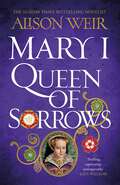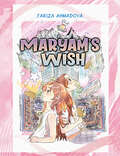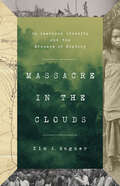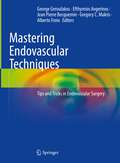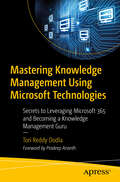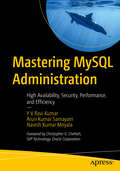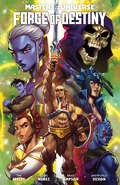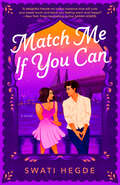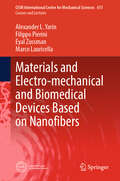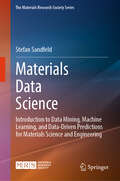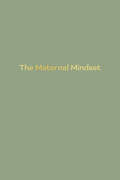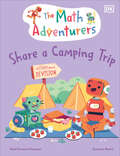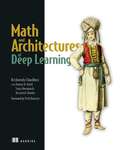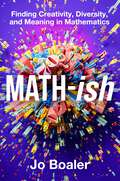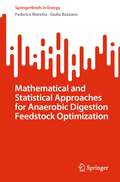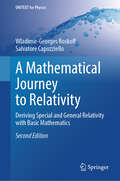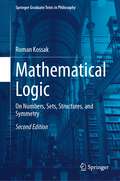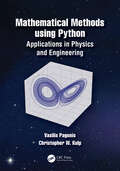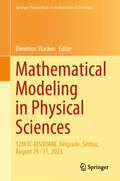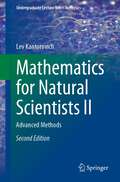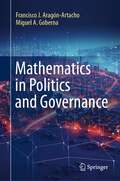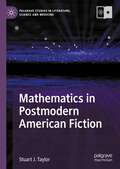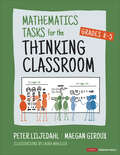- Table View
- List View
Mary I: Queen of Sorrows
by Alison Weir'A must for Tudor fans everywhere' Tracy Borman'Thrilling, captivating . . . unforgettable' Kate Williams'A gripping story that's underpinned by a wealth of research . . . this is Alison Weir at her best' Nicola TallisSunday Times bestselling novelist Alison Weir returns with the spellbinding story of Mary I.A DESTINY REWRITTEN. A ROYAL HEART DIVIDED.Adored only child of Henry VIII and his Queen, Katherine of Aragon, Princess Mary is raised in the golden splendour of her father's court. But the King wants a son and heir.With her parents' marriage, and England, in crisis, Mary's perfect world begins to fall apart. Exiled from the court and her beloved mother, she seeks solace in her faith, praying for her father to bring her home. But when the King does promise to restore her to favour, his love comes with a condition.The choice Mary faces will haunt her for years to come - in her allegiances, her marriage and her own fight for the crown. Can she become the queen she was born to be?MARY I. HER STORY.Alison Weir's new Tudor novel is the tale, full of drama and tragedy, of how a princess with such promise, loved by all who knew her, became the infamous Bloody Mary.---PRAISE FOR ALISON WEIR'S TUDOR FICTION'Alison Weir gives us her most compelling heroine yet... This is where the story of the Tudors begins' Tracy Borman'History has the best stories and they should all be told like this' Conn Iggulden'As always, Alison Weir is ahead of the curve - and at the top of her game' Sarah Gristwood'Weir is excellent on the little details that bring a world to life' Guardian'Profoundly moving... lingers long after the last page' Elizabeth Fremantle
Maryam's Wish
by Fariza AhmadovaLike many other girls, Maryam always dreamed of having a sister. One day, on her way home, Maryam met a girl called Shusha. Even though Shusha was not able to speak, she was able to hear. Maryam couldn’t leave Shusha alone on the cold street and so she took her with her. Slowly, despite the difficulties Mayram and Shusha grew into the closest friends. But then Shusha discovers a musical talent, which changes her life. Will Maryam’s and Shusha’s friendship overcome the difficulties? Discover a touching story in the heart of the Caucasus-Azerbaijan, revolving around four women. This book is about the importance of accepting societal differences.
Massacre in the Clouds: An American Atrocity and the Erasure of History
by Kim A. WagnerIn this &“forensic, unflinching, devastating work of historical recovery&” (Sathnam Sanghera), Bud Dajo—an American atrocity bigger than Wounded Knee or My Lai, yet today largely forgotten—is revealed, thanks to the rediscovery of a single photograph. In March 1906, American soldiers on the island of Jolo in the southern Philippines surrounded and killed 1000 local men, women, and children, known as Moros, on top of an extinct volcano. The so-called &‘Battle of Bud Dajo&’ was hailed as a triumph over an implacable band of dangerous savages, a &“brilliant feat of arms&” according to President Theodore Roosevelt. Some contemporaries, including W.E.B. Du Bois and Mark Twain, saw the massacre for what it was, but they were the exception and the U.S. military authorities successfully managed to bury the story. Despite the fact that the slaughter of Moros had been captured on camera, the memory of the massacre soon disappeared from the historical record. In Massacre in the Clouds, Kim A. Wagner meticulously recovers the history of a forgotten atrocity and the remarkable photograph that exposed its grim logic. His vivid, unsparing account of the massacre—which claimed hundreds more lives than Wounded Knee and My Lai combined—reveals the extent to which practices of colonial warfare and violence, derived from European imperialism, were fully embraced by Americans with catastrophic results.
Mastering Endovascular Techniques: Tips and Tricks in Endovascular Surgery
by George Geroulakos Efthymios Avgerinos Jean Pierre Becquemin Gregory C. Makris Alberto FroioThis book provides a detailed practically applicable guide to using the latest endovascular techniques. Chapters feature detailed step-by-step instructions on how to perform procedures relevant for instances of disorders including cerebrovascular disease, splachnic arteries, and aortic aneurysms. Multiple choice questions are provided throughout to enable the reader to identify the points covered. Mastering Endovascular Techniques: Tips and Tricks in Endovascular Surgery describes the latest endovascular methodologies and features detailed insight on how to apply these techniques into day-to-day clinical practice.
Mastering Knowledge Management Using Microsoft Technologies: Secrets to Leveraging Microsoft 365 and Becoming a Knowledge Management Guru
by Tori Reddy DodlaFor companies and individuals already using Microsoft365 and other Microsoft technologies, this book is designed to reveal how to fully utilize these platforms for effective Knowledge Management without needing to rely on additional third-party tools. It addresses a common issue where organizations find themselves with overlapping technology capabilities for managing knowledge. This situation arises because many companies are not fully aware of the capabilities they already possess within their existing Microsoft tools. Knowledge management firms capitalize on this gap by offering white-labeled, branded applications with user-friendly interfaces, selling them to companies that could achieve the same results with what they already own, if only they knew how to use them properly. By mastering the use of Microsoft technologies for Knowledge Management, organizations can save significant amounts of money that would otherwise be spent on unnecessary external solutions. Whether your objective is to optimize Knowledge Management processes or align these tools with your organization's business processes, this book is designed to serve as a valuable resource, offering practical guidance and strategies to empower your endeavors. By the end of this book, readers will be equipped with the knowledge and skills necessary to make informed decisions regarding the utilization of Microsoft technologies for Knowledge Management and organizational design. What You Will Learn The components of a Microsoft Knowledge Base How PowerPlatfom can support Knowledge Management activities How Microsoft tools fit into the Knowledge Management Landscape How to integrate AI using Microsoft Co-Pilot Who This Book Is For Chief Technology Officers, Chief Information Officers, Chief Knowledge Officers, Chief Digital Officers, Directors of Knowledge Management, Knowledge Managers, SharePoint Administrators, Digital Transformation Consultants
Mastering MySQL Administration: High Availability, Security, Performance, and Efficiency
by Y V Ravi Kumar Arun Kumar Samayam Naresh Kumar MiryalaThis book is your one-stop resource on MySQL database installation and server management for administrators. It covers installation, upgrades, monitoring, high availability, disaster recovery, security, and performance and troubleshooting. You will become fluent in MySQL 8.2, the latest version of the highly scalable and robust relational database system.With a hands-on approach, the book offers step-by-step guidance on installing, upgrading, and establishing robust high availability and disaster recovery capabilities for MySQL databases. It also covers high availability with InnoDB and NDB clusters, MySQL routers and enterprise MySQL tools, along with robust security design and performance techniques. Throughout, the authors punctuate concepts with examples taken from their experience with large-scale implementations at companies such as Meta and American Airlines, anchoring this practical guide to MySQL 8.2 administration in the real world.What YouWill LearnUnderstand MySQL architecture and best practices for administration of MySQL serverConfigure high availability, replication, disaster recovery with InnoDB and NDB enginesBack up and restore with MySQL utilities and tools, and configure the database for zero data lossTroubleshoot with steps for real-world critical errors and detailed solutionsWho This Book Is ForTechnical professionals, database administrators, developers, and engineers seeking to optimize MySQL databases for scale, security, and performance
Masters of the Universe: Forge of Destiny
by Tim SeeleyThe unseen adventures of Prince Adam&’s first year as He-Man!On the world of Eternia, a fragile balance exists between science and magic, a balance kept by the universe&’s mightiest hero, He-Man, secretly Prince Adam, heir to the throne! Still inexperienced at saving the world, Adam and his companions travel to the mysterious nation of Anwat Gar, and uncover a plot by the evil Skeletor to seize control of the advanced technology that powers the island city!Collecting Masters of the Universe: Forge of Destiny #1–#4, magic, mystery, and adventure await in this exciting prequel to the hit Netflix series!
Match Me If You Can
by Swati HegdeA young magazine writer in Mumbai must prove her matchmaking skills—and contend with growing feelings for her close family friend—in this debut desi romance.&“A delightful friends-to-lovers romance that will curb your sweet tooth and leave you feeling warm and happy!&”—New York Times bestselling author Sarah AdamsConfident fashionista Jia Deshpande spends her days writing cliché-ridden listicles for Mimosa, Mumbai&’s top women&’s magazine. When she can, Jia dishes about the messy truth of real love on her anonymous blog, attends her family&’s weekly game nights, and ignores her true feelings for her childhood friend. If that wasn&’t enough, Jia needs to successfully set up a coworker with her perfect match to get the green light for her new matchmaking column. Thankfully, organizing meet-cutes has never been difficult for her. Local pub owner and cocktail genius Jaiman Patil can&’t help but be enamored with Jia and her meddling spirit. He&’s always been an honorary part of her family, but even more so since his own moved to America. Life with the Deshpandes is chaotic and loud, but it&’s also more loving than anything he experienced growing up, and he wouldn&’t risk losing that for the world. It feels manageable—until his pub begins to struggle and his long-hidden feelings for Jia grow deeper. When Jia&’s attempts at office matchmaking go haywire, risking new friendships and her relationship with Jaiman, she must reevaluate her own thoughts on love. For the first time, Jia Deshpande realizes that love may be a lot more complicated than she thought. Luckily, happily-ever-afters are never in short supply in Mumbai.
Materials and Electro-mechanical and Biomedical Devices Based on Nanofibers (CISM International Centre for Mechanical Sciences #611)
by Alexander L. Yarin Filippo Pierini Eyal Zussman Marco LauricellaThe book is interwoven according to the intrinsic logics of modern most important applications of electrospun nanofibers. It discusses such application-oriented nanofibers as self-healing vascular nanotextured materials, biopolymer nanofibers, soft robots and actuators based on nanofibers, biopolymer nanofiber-based triboelectric nanogenerators, metallized nanofibers, and heaters and sensors based on them. It also includes such topics as the injectable nanofibrous biomaterials, fibrous hemostatic agents and their interaction with blood, as well as electrospun nanofibers for face-mask applications. The book also details polyelectrolytes-based complex nanofibers and their use as actuators. It also covers drug release facilitated by polyelectrolytes-based complex nanofibers. The fundamental aspects of electrospinning of polymer nanofibers discussed in the final part of the book link them to the applications described in the preceding chapters. Such topics as polymer solution preparation and their rheological properties, e.g., viscoelasticity and the related spinnability, the electrical conductivity of polymer solutions, and the cascade of the physical phenomena resulting in formation of nanofibers encompass the experimental aspects. Also, the general quasi-1D equations used for modeling of formation of electrospun polymer nanofibers, and the numerical aspects of their solution are discussed in detail, including such modeling-driven applications as nanofiber alignment by electric focusing fields.
Materials Data Science: Introduction to Data Mining, Machine Learning, and Data-Driven Predictions for Materials Science and Engineering (The Materials Research Society Series)
by Stefan SandfeldThis text covers all of the data science, machine learning, and deep learning topics relevant to materials science and engineering, accompanied by numerous examples and applications. Almost all methods and algorithms introduced are implemented “from scratch” using Python and NumPy. The book starts with an introduction to statistics and probabilities, explaining important concepts such as random variables and probability distributions, Bayes’ theorem and correlations, sampling techniques, and exploratory data analysis, and puts them in the context of materials science and engineering. Therefore, it serves as a valuable primer for both undergraduate and graduate students, as well as a review for research scientists and practicing engineers. The second part provides an in-depth introduction of (statistical) machine learning. It begins with outlining fundamental concepts and proceeds to explore a variety of supervised learning techniques for regression and classification, including advanced methods such as kernel regression and support vector machines. The section on unsupervised learning emphasizes principal component analysis, and also covers manifold learning (t-SNE and UMAP) and clustering techniques. Additionally, feature engineering, feature importance, and cross-validation are introduced. The final part on neural networks and deep learning aims to promote an understanding of these methods and dispel misconceptions that they are a “black box”. The complexity gradually increases until fully connected networks can be implemented. Advanced techniques and network architectures, including GANs, are implemented “from scratch” using Python and NumPy, which facilitates a comprehensive understanding of all the details and enables the user to conduct their own experiments in Deep Learning.
The Maternal Mindset: A journal for all mums going through the postnatal journey
by Annie HumphrisA journal for all mums going through the postnatal journey Conceived and compiled by new mum Annie Humphris, The Maternal Mindset is a journal for anyone navigating the trials and tribulations of motherhood. It aims to create a safe space for readers to release their thoughts and feelings without any judgement. Simple to read and to navigate, this book uses minimalist graphics and limited colours to avoid overwhelming even the most burnt-out or sleep-deprived mum. As well as offering advice and support on topics such as Overwhelm, Burnout, Expectations vs Reality and Identity, The Maternal Mindset includes many contributions from ‘Real Life Mums’.
The Math Adventurers Share a Camping Trip: A Story About Division (The Math Adventurers)
by Sital Gorasia ChapmanJoin two friendly and funny robots, Beep and Boots, as they learn all about division and discover that math is everywhere they look.Beep and Boots are going on a camping trip in the great outdoors. They've got a warm sleeping bag each, a snuggly blanket each, and marshmallows to share. But they realize there are not enough tent pegs! Can they learn to divide up what they have and put up their tents before it's time for bed?Characterful illustrations and rhyming text bring Beep and Boots to life. Children ages 5-7 will love seeing the adventures the robot duo go on and will learn key mathematical concepts concerning division in a gentle, fun way. A visual glossary and math questions at the end of the book reinforce learning and encourage kids to look at the math they can see in the world around them.
Math and Architectures of Deep Learning
by Krishnendu ChaudhuryShine a spotlight into the deep learning &“black box&”. This comprehensive and detailed guide reveals the mathematical and architectural concepts behind deep learning models, so you can customize, maintain, and explain them more effectively.Inside Math and Architectures of Deep Learning you will find: Math, theory, and programming principles side by side Linear algebra, vector calculus and multivariate statistics for deep learning The structure of neural networks Implementing deep learning architectures with Python and PyTorch Troubleshooting underperforming models Working code samples in downloadable Jupyter notebooks The mathematical paradigms behind deep learning models typically begin as hard-to-read academic papers that leave engineers in the dark about how those models actually function. Math and Architectures of Deep Learning bridges the gap between theory and practice, laying out the math of deep learning side by side with practical implementations in Python and PyTorch. Written by deep learning expert Krishnendu Chaudhury, you&’ll peer inside the &“black box&” to understand how your code is working, and learn to comprehend cutting-edge research you can turn into practical applications. Foreword by Prith Banerjee. About the technology Discover what&’s going on inside the black box! To work with deep learning you&’ll have to choose the right model, train it, preprocess your data, evaluate performance and accuracy, and deal with uncertainty and variability in the outputs of a deployed solution. This book takes you systematically through the core mathematical concepts you&’ll need as a working data scientist: vector calculus, linear algebra, and Bayesian inference, all from a deep learning perspective. About the book Math and Architectures of Deep Learning teaches the math, theory, and programming principles of deep learning models laid out side by side, and then puts them into practice with well-annotated Python code. You&’ll progress from algebra, calculus, and statistics all the way to state-of-the-art DL architectures taken from the latest research. What's inside The core design principles of neural networks Implementing deep learning with Python and PyTorch Regularizing and optimizing underperforming models About the reader Readers need to know Python and the basics of algebra and calculus. About the author Krishnendu Chaudhury is co-founder and CTO of the AI startup Drishti Technologies. He previously spent a decade each at Google and Adobe. Table of Contents 1 An overview of machine learning and deep learning 2 Vectors, matrices, and tensors in machine learning 3 Classifiers and vector calculus 4 Linear algebraic tools in machine learning 5 Probability distributions in machine learning 6 Bayesian tools for machine learning 7 Function approximation: How neural networks model the world 8 Training neural networks: Forward propagation and backpropagation 9 Loss, optimization, and regularization 10 Convolutions in neural networks 11 Neural networks for image classification and object detection 12 Manifolds, homeomorphism, and neural networks 13 Fully Bayes model parameter estimation 14 Latent space and generative modeling, autoencoders, and variational autoencoders A Appendix
Math-ish: Finding Creativity, Diversity, and Meaning in Mathematics
by Jo BoalerFrom Stanford professor, author of Limitless Mind, youcubed.org founder, and leading expert in the field of mathematics education Jo Boaler comes a groundbreaking guide to finding joy and understanding by adopting a diverse approach to learning math.“Every once in a while, someone revolutionizes an approach to a difficult subject and changes it forever. That is what Jo Boaler has done for math. Fresh, smart, and inclusive, Jo Boaler's strategy eschews the one-size-fits-a-few approach and instead allows math to be seen and solved by everyone. A huge achievement. Math-ish is the only math book I’ve ever enjoyed reading in my entire life. Honestly.” -Bonnie Garmus, author of Lessons in ChemistryMathematics is a fundamental part of life, yet every one of us has a unique relationship with learning and understanding the subject. Working with numbers may inspire confidence in our abilities or provoke anxiety and trepidation. Stanford researcher, mathematics education professor, and the leading expert on math learning Dr. Jo Boaler argues that our differences are the key to unlocking our greatest mathematics potential.In Math-ish, Boaler shares new neuroscientific research on how embracing the concept of “math-ish”—a theory of mathematics as it exists in the real world—changes the way we think about mathematics, data, and ourselves. When we can see the value of diversity among people and multi-faceted approaches to learning math, we are free to truly flourish. Utilizing the latest research on math education, Jo guides us through seven principles that can radically reframe our relationship with the subject:• The power of mindset on learning• Utilizing a visual approach to math• The impact of physical movement and communication on understanding• Understanding the value of an "ish" perspective - in mathematics and beyond• The importance of connected and flexible knowledge• New data on diverse teaching modes that work with different learning styles, not against them• The value of diversity in learning mathematics—and beyondWhen mathematics is approached more broadly, inclusively, and with a greater sense of wonder and play—when we value the different ways people see, approach, and understand it—we empower ourselves and gain a beneficial understanding of its value in our lives.
Mathematical and Statistical Approaches for Anaerobic Digestion Feedstock Optimization (SpringerBriefs in Energy)
by Federico Moretta Giulia BozzanoThis book examines biomass mixture modeling and optimization. The book discusses anaerobic digestion and related fermentative processes and explains their compositional dynamics. Early chapter examine macromolecules, elemental fractions, and their direct influence on methane production. Supported by an extensive data bank of substrates obtained from research, the book points out correlations that enable the estimation of global methane production for diverse biomass mixtures. Furthermore, it provides valuable insights into discerning the optimal composition capable of yielding the utmost methane output.The book integrates cutting-edge machine learning techniques and shows how the programming language Python and Julia can be used for analysis and to optimize processes. It has many graphs, figures, and visuals.
A Mathematical Journey to Relativity: Deriving Special and General Relativity with Basic Mathematics (UNITEXT for Physics)
by Wladimir-Georges Boskoff Salvatore CapozzielloThe 2nd edition of this textbook features more than 100 pages of new material, including four new chapters, as well as an improved discussion of differential geometry concepts and their applications. The textbook aims to provide a comprehensive geometric description of Special and General Relativity, starting from basic Euclidean geometry to more advanced non-Euclidean geometry and differential geometry. Readers will learn about the Schwarzschild metric, the relativistic trajectory of planets, the deflection of light, the black holes, and the cosmological solutions like de Sitter, Friedman-Lemaître-Robertson-Walker, and Gödel ones, as well as the implications of each of them for the observed physical world. In addition, the book provides step-by-step solutions to problems and exercises, making it an ideal introduction for undergraduate students and readers looking to gain a better understanding of Special and General Relativity. In this new edition, a wide discussion on metric-affine theories of gravity and equivalent formulations of General Relativity is reported. The aim is presenting also topics which could be useful for PhD students and researchers studying General Relativity from an advanced point of view.
Mathematical Logic: On Numbers, Sets, Structures, and Symmetry (Springer Graduate Texts in Philosophy #4)
by Roman KossakThis textbook is a second edition of the successful, Mathematical Logic: On Numbers, Sets, Structures, and Symmetry. It retains the original two parts found in the first edition, while presenting new material in the form of an added third part to the textbook. The textbook offers a slow introduction to mathematical logic, and several basic concepts of model theory, such as first-order definability, types, symmetries, and elementary extensions. Part I, Logic Sets, and Numbers, shows how mathematical logic is used to develop the number structures of classical mathematics. All necessary concepts are introduced exactly as they would be in a course in mathematical logic; but are accompanied by more extensive introductory remarks and examples to motivate formal developments. The second part, Relations, Structures, Geometry, introduces several basic concepts of model theory, such as first-order definability, types, symmetries, and elementary extensions, and shows how they are usedto study and classify mathematical structures. The added Part III to the book is closer to what one finds in standard introductory mathematical textbooks. Definitions, theorems, and proofs that are introduced are still preceded by remarks that motivate the material, but the exposition is more formal, and includes more advanced topics. The focus is on the notion of countable categoricity, which analyzed in detail using examples from the first two parts of the book. This textbook is suitable for graduate students in mathematical logic and set theory and will also be of interest to mathematicians who know the technical aspects of the subject, but are not familiar with its history and philosophical background.
Mathematical Methods using Python: Applications in Physics and Engineering
by Vasilis Pagonis Christopher Wayne KulpThis advanced undergraduate textbook presents a new approach to teaching mathematical methods for scientists and engineers. It provides a practical, pedagogical introduction to utilizing Python in Mathematical and Computational Methods courses. Both analytical and computational examples are integrated from its start. Each chapter concludes with a set of problems designed to help students hone their skills in mathematical techniques, computer programming, and numerical analysis. The book places less emphasis on mathematical proofs, and more emphasis on how to use computers for both symbolic and numerical calculations. It contains 182 extensively documented coding examples, based on topics that students will encounter in their advanced courses in Mechanics, Electronics, Optics, Electromagnetism, Quantum Mechanics etc.An introductory chapter gives students a crash course in Python programming and the most often used libraries (SymPy, NumPy, SciPy, Matplotlib). This is followed by chapters dedicated to differentiation, integration, vectors and multiple integration techniques. The next group of chapters covers complex numbers, matrices, vector analysis and vector spaces. Extensive chapters cover ordinary and partial differential equations, followed by chapters on nonlinear systems and on the analysis of experimental data using linear and nonlinear regression techniques, Fourier transforms, binomial and Gaussian distributions. The book is accompanied by a dedicated GitHub website, which contains all codes from the book in the form of ready to run Jupyter notebooks. A detailed solutions manual is also available for instructors using the textbook in their courses.Key Features:· A unique teaching approach which merges mathematical methods and the Python programming skills which physicists and engineering students need in their courses.· Uses examples and models from physical and engineering systems, to motivate the mathematics being taught.· Students learn to solve scientific problems in three different ways: traditional pen-and-paper methods, using scientific numerical techniques with NumPy and SciPy, and using Symbolic Python (SymPy).Vasilis Pagonis is Professor of Physics Emeritus at McDaniel College, Maryland, USA. His research area is applications of thermally and optically stimulated luminescence. He taught courses in mathematical physics, classical and quantum mechanics, analog and digital electronics and numerous general science courses. Dr. Pagonis’ resume lists more than 200 peer-reviewed publications in international journals. He is currently associate editor of the journal Radiation Measurements. He is co-author with Christopher Kulp of the undergraduate textbook “Classical Mechanics: a computational approach, with examples in Python and Mathematica” (CRC Press, 2020). He has also co-authored four graduate-level textbooks in the field of luminescence dosimetry, and most recently published the book “Luminescence Signal analysis using Python” (Springer, 2022).Christopher Kulp is the John P. Graham Teaching Professor of Physics at Lycoming College. He has been teaching undergraduate physics at all levels for 20 years. Dr. Kulp’s research focuses on modelling complex systems, time series analysis, and machine learning. He has published 30 peer-reviewed papers in international journals, many of which include student co-authors. He is also co-author of the undergraduate textbook “Classical Mechanics: a computational approach, with examples in Python and Mathematica” (CRC Press, 2020).
Mathematical Modeling in Physical Sciences: 12th IC-MSQUARE, Belgrade, Serbia, August 28–31, 2023 (Springer Proceedings in Mathematics & Statistics #446)
by Dimitrios VlachosThis volume gathers selected papers presented at the ICMSQUARE 2023 - 12th International Conference on Mathematical Modeling in Physical Sciences held in Belgrade, Serbia from August 28–31, 2023. This proceedings offers a compilation of cutting-edge research, which aims to advance the knowledge and development of high-quality research in mathematical fields related to physics, chemistry, biology, medicine, economics, environmental sciences, and more. Annually held since 2012, the ICMSQUARE conference serves as a platform for the exchange of ideas and discussions on the latest technological trends in these fields. This book is an invaluable resource for researchers, academicians, and professionals in these areas seeking to stay up-to-date with the latest developments in mathematical modeling.
Mathematics for Natural Scientists II: Advanced Methods (Undergraduate Lecture Notes in Physics)
by Lev KantorovichThis textbook, the second in a series (the first covered fundamentals and basics), seeks to make its material accessible to physics students. Physics/engineering can be greatly enhanced by knowledge of advanced mathematical techniques, but the math-specific jargon and laborious proofs can be off-putting to students not well versed in abstract math. This book uses examples and proofs designed to be clear and convincing from the context of physics, as well as providing a large number of both solved and unsolved problems in each chapter. This is the second edition, and it has been significantly revised and enlarged, with Chapters 1 (on linear algebra) and 2 (on the calculus of complex numbers and functions) having been particularly expanded. The enhanced topics throughout the book include: vector spaces, general (non-Hermitian, including normal and defective) matrices and their right/left eigenvectors/values, Jordan form, pseudoinverse, linearsystems of differential equations, Gaussian elimination, fundamental theorem of algebra, convergence of a Fourie series and Gibbs-Wilbraham phenomenon, careful derivation of the Fourier integral and of the inverse Laplace transform. New material has been added on many physics topics meant to illustrate the maths, such as 3D rotation, properties of the free electron gas, van Hove singularities, and methods for both solving PDEs with a Fourier transform and calculating the width of a domain wall in a ferromagnet, to mention just a few. This textbook should prove invaluable to all of those with an interest in physics/engineering who have previously experienced difficulty processing the math involved.
Mathematics in Politics and Governance
by Francisco J. Aragón-Artacho Miguel A. GobernaThis book presents the mathematical tools that politicians use to make rational decisions about health, education, culture, economy, finance, transportation, and national defense for their citizens. The selection of topics addressed is based on the experiences of four veteran politicians who have doctorates or master’s degrees in mathematics. The exposition also considers the mathematical tools used by politicians to capture votes or optimize their impact on the design of electoral districts, i.e., gerrymandering, without forgetting the mathematics applied to parliamentary activity and political science.Aimed at a general educated readership, a basic knowledge of mathematics is the only requisite to understanding most of the book. Certain sections, denoted in the book with a star, contain more advanced material and require some knowledge of undergraduate math. A later chapter is dedicated to applications and techniques of machine learning and the final chapter discusses a variety of cases where political decisions have affected mathematical development. Readers gravitating towards this book are those who are curious about the history of mathematics, including optimizers and mathematicians who would like to learn more about the historical roots of their discipline. There will also be strong appeal to mathematically-oriented economists, political scientists, and people generally interested in mathematics.Mathematics is – or it should be! – an important part of our culture. The impact of mathematics is sometimes silent, but a powerful one. The authors of this book did an incredible work in digging out areas of mathematical reasoning that pervades social and political life. Reading this book, we will all enrich our vision of mathematics’ value for society.(Nuno Crato, Professor of Applied Mathematics, University of Lisbon, former minister of Education and Science of Portugal 2011–2015)This monograph shows in an impressive way that mathematics can be very helpful in making and evaluating political decisions and that it is indispensable in the progressive penetration of all areas of society with scientific methods. This also includes politics. Not everything in politics can be justified or related to mathematics, but politics should not be made in contradiction to mathematical truths. For me, this is a central message of this publication.(Johanna Wanka, Professor of Applied Mathematics, Merseburg University of Applied Sciences, former Minister of Education and Research, Germany 2013–2018)
Mathematics in Postmodern American Fiction (Palgrave Studies in Literature, Science and Medicine)
by Stuart J. TaylorThis book delivers an innovative critical approach to better understand U.S. fiction of the information age, and argues that in the last eighty years, fiction has become increasingly concerned with its representations of mathematical ideas, images, and practices. In so doing, this book provides a fuller, transnational account of the place of mathematics in understanding mathematically informed novels. Literature and science studies have acknowledged and situated historical points of cultural crossover; by emphasising mathematics within this larger intellectual context – and not as an unlikely and alien adjunct to post-war culture – this monograph clarifies how mathematically informed postmodern fictions work in a cognate fashion to other fields undergoing structuralist revolutions. This is especially evident in fiction by the key, mathematically-literate Postmodern authors upon whom this study focuses, namely, Thomas Pynchon, Don DeLillo, and David Foster Wallace, through which recent the technological revolutions, facilitated by mathematics, manifest in cultural discourse.
Mathematics Tasks for the Thinking Classroom, Grades K-5 (Corwin Mathematics Series)
by Peter Liljedahl Maegan GirouxPractical and proven math tasks to maximize student thinking and learning Building upon the blockbuster success of Building Thinking Classrooms in Mathematics, Peter Liljedahl has joined forces with co-author Maegan Giroux to bring the Building Thinking Classrooms (BTC) framework to life in this new book, Mathematics Tasks for the Thinking Classroom, Grades K-5. But this book is so much more than simply a collection of good thinking tasks. It delves deeper into the implementation of the 14 practices from the BTC framework by updating the practices with the newest research, and focusing on the practice through the lens of rich math tasks that address specific mathematical learning outcomes or standards. Across the 20 non-curricular tasks and 30 curricular tasks used as models, this book: Helps you choose tasks to fit your particular math standards, goals, and the competencies you want your students to build Walks you through all the steps and scripts to launch, facilitate, and consolidate each task Shares examples of possible student solutions along with hints you might offer to help their thinking along Offers tasks for consolidation, example notes to my future forgetful self, and mild, medium, and spicy check-your-understanding questions (CYUs) for every thin sliced sequences of curricular tasks Imparts reflections from the authors on each task The book closes with specific guidance on how to find more tasks or craft your own non-curricular and curricular tasks, along with answers to educators’ frequently asked questions. It includes access to a companion website that includes downloadables and a task template for creating your own tasks. Whether you are new to BTC or a seasoned user, Mathematics Tasks for the Thinking Classroom, Grades K-5 will help teachers, coaches, and specialists transform traditional math classrooms into dynamic and thought-provoking learning spaces.
Mathematics Tasks for the Thinking Classroom, Grades K-5 (Corwin Mathematics Series)
by Peter Liljedahl Maegan GirouxPractical and proven math tasks to maximize student thinking and learning Building upon the blockbuster success of Building Thinking Classrooms in Mathematics, Peter Liljedahl has joined forces with co-author Maegan Giroux to bring the Building Thinking Classrooms (BTC) framework to life in this new book, Mathematics Tasks for the Thinking Classroom, Grades K-5. But this book is so much more than simply a collection of good thinking tasks. It delves deeper into the implementation of the 14 practices from the BTC framework by updating the practices with the newest research, and focusing on the practice through the lens of rich math tasks that address specific mathematical learning outcomes or standards. Across the 20 non-curricular tasks and 30 curricular tasks used as models, this book: Helps you choose tasks to fit your particular math standards, goals, and the competencies you want your students to build Walks you through all the steps and scripts to launch, facilitate, and consolidate each task Shares examples of possible student solutions along with hints you might offer to help their thinking along Offers tasks for consolidation, example notes to my future forgetful self, and mild, medium, and spicy check-your-understanding questions (CYUs) for every thin sliced sequences of curricular tasks Imparts reflections from the authors on each task The book closes with specific guidance on how to find more tasks or craft your own non-curricular and curricular tasks, along with answers to educators’ frequently asked questions. It includes access to a companion website that includes downloadables and a task template for creating your own tasks. Whether you are new to BTC or a seasoned user, Mathematics Tasks for the Thinking Classroom, Grades K-5 will help teachers, coaches, and specialists transform traditional math classrooms into dynamic and thought-provoking learning spaces.
